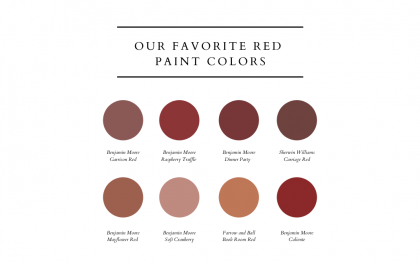
I always thought I’d be a “boy mom.” I had a house full of brothers, I went through a serious tomboy phase, and l loved sports. It seemed like life was preparing me to be a mother of boys— but that’s not the case. I am a mom to two beautiful daughters who twirl, sing, dress-up, and act like princesses most of the day. It was an adjustment to my expectations, but I love it.
At this point I’ve fully embraced being a “girl mom.” And in doing so, I’ve realized that title comes with some big responsibilities. It’s not that “boy mom” doesn’t too, but as a girl mom, I’m faced with the unique challenge of trying to help my daughters love who they are, and especially, love the body they were given.
Through my own journey from not being a fan of my body much at all in my twenties to truly (finally) loving my body my thirties, I’ve learned one of the most important lessons about being a girl mom: My daughters’ ability to love their bodies starts with one person. Me.
Research shows that the way children—especially girls—feel about their bodies often reflects the way their parents feel about their own bodies.
“Girls whose mothers had made self-critical comments about their own appearance and diet reported lower body esteem, lower body satisfaction, and more problematic eating attitudes than girls whose mothers had not made self-critical comments,” reported Handford et al.
So many of us mamas are caught in a cycle of generations of body hatred, or at least body dissatisfaction—even children as young as 3 year olds can express unhappiness with their bodies. The media, full of airbrushed celebrities and plastic surgery, has only encouraged this self-critical mentality, so it’s no wonder that so many of us struggle in this area.
Ultimately, body dissatisfaction is a learned behavior—our grandmothers and mothers aren’t at fault for not really loving their bodies—and neither are we. But once we realize this is our situation, we can take steps to change our perception. And hopefully we’ll raise the next generation to think differently.
Ultimately, body dissatisfaction is a learned behavior.
Here are seven practical things we can do to help our daughters with this today:
01. Avoid negative self-talk.
Speak positively about your appearance—especially around your daughter. If she hears you commenting on what’s wrong with your body, this thought pattern will transfer, and she’ll become more critical about her body too.
By using positive affirmations, you can reprogram your subconscious mind to think more positively about yourself. So if you tell yourself, “I am a beautiful, lovable woman with a strong, healthy body,” you will begin acting in ways that support this statement. You might find yourself caring for your appearance more, making healthier meal choices, or exercising more. This positive energy around your body will radiate to your children as well.
So, try to make positive comments about your body in front of your daughter, things like: “I love my strong arms that can wrap you up into a big hug!” And smile when you look at yourself in the mirror, instead of looking for imperfections!
02. Practice gratitude and self-reflection.
As part of our bedtime routine, my five year old and I will often list the favorite parts of our day. But sometimes, instead of asking her the best part of her day, I ask her to name her favorite thing about herself. Snuggled next to me, she might say, “I love my singing voice.” Then I’ll say a thing or two that I love about myself. Together we thank God for the gifts that we’ve just listed.
Also, it’s helpful to emphasize your daughter’s inner beauty, not just her appearance. While taking care of our appearance is important, we are so much more than how we look. Help your daughter be proud of her kind heart or her willingness to help. Make comments that reinforce these strengths or what she’s doing well: “Thank you for being so patient with your sister today.”
By helping your daughter reflect on what she likes about herself and what she’s doing well, you’re establishing positive thought patterns at a young age. And this can help counter unhealthy messages sent by peers or the media later on.
03. Keep language around food neutral.
A healthy relationship with food is an important component of a positive body image. Avoid calling food “good” or “bad” around your daughter. Food is not moral and shame should not come with mealtime. While certainly there are foods that are more nutritious than others, it is not “an enemy.”
With personal experience battling an eating disorder, I can attest to how important this concept is. Ultimately eating a variety of different types of foods (in moderation) is key—including sugar, from time to time—as this will prevent any negative associations with food.
Avoid controlling children’s behavior with food, also. This is a hard one, but teaching our daughters they deserve or don’t deserve certain foods based on their behavior isn’t helpful (ex. “You can have dessert if you finish your dinner.” Or “You hit your sister so you lose dessert.”). This can turn sweets into novelties that need to be earned instead of enjoyed and can lead to strong emotional connections to food in children (increasing the risk of emotional eating down the road).
04. Have an open dialogue with your daughter about food.
Our kids will pick up on our eating habits — it’s inevitable. So when it comes to dieting, make sure you do not demonize food when you’re eating. Rather, explain your changed eating habits to your daughter, and explain to her how certain foods help you feel good — whereas other foods do not; and that everybody’s body reacts different to other foods. It’s critical that you have an open dialogue with your daughter about food and how it relates to her health.
I highly recommend reading the book Intuitive Eating if you’re interested in learning more about this—it emphasizes listening to your body and taking a more conscious approach to the food we consume.
05. Exercise for the right reasons.
Model healthy exercise that focuses on improving strength and energy levels, not losing weight. If you own a scale, try to focus on using it in a healthy, balanced way—don’t rely too much on it. If you notice that you have a tendency to weigh yourself frequently, maybe you can limit this to just once a week (or, not sighing when you do weigh yourself!).
Show your daughter the importance of different types of movement and exercise with her if possible (we especially like to do this Christian stretching routine together). While exercising together, I like to point out that moving my body helps me have more energy and even helps me think better.
Balance and variety of exercise will encourage movement with healthy motives, and will teach our daughter’s that our bodies weren’t made to be stagnant—nor were they made to be pushed beyond their limits daily.
06. Be okay with taking photos that aren’t “perfect.”
Never shy from a fun photo with your child because you’re “having a bad hair day” or “don’t like how you look.” Create memories regardless of your appearance. Wear that swimsuit on vacation and play with her in the sand. Show her that the way you look doesn’t affect your ability to enjoy yourself.
07. Take steps to improve your self-love.
Take an honest look at where you fall on the self-love scale (1 being almost no self love and 10 being full of self love). Then spend time working on this to have a more appreciative, loving opinion of yourself and your body image. By becoming more mindful of your self-talk, you can take steps to make changes in this area, but it’s hard to do this if you don’t realize there’s a problem!
Once you recognize that there could be some improvement in this area, then you can intentionally challenge these unhealthy thoughts. Journaling can be a great way to do this, as it helps you think about your strengths and weaknesses and therapeutically practice reflection and meditation—it’s even been known to improve self-esteem.
You can start challenging these unhealthy thoughts by writing down that thought and then writing down a positive, affirmative statement behind it.
Here’s an example. When you look at your appearance in the mirror, if you think: “This is as good as it’s gonna get today, I guess”—know that this is an unhealthy thought.
Replace this thought with: “I am beautiful and I love how my smile lights up my appearance.”
Meditate on your positive statements daily and let them become the primary way you think of yourself, and bit by bit, you’ll start to internalize them. But if you’re still struggling, consider seeing a counselor so you can talk through your behavior and thought patterns. By taking some time to make sense of your own relationship with your body, you can transform it into one of love.
Our children are watching us from day one, and they need us to do the hard work in this area of our lives. By taking steps to change the personal perceptions we have of ourselves, we can lead our girls by example—and in turn, our daughter’s will carry themselves with more confidence and experience life more fully.
By taking some time to make sense of your own relationship with your body, you can transform it into one of love.
It’s not going to be an overnight thing, but the time to start is now. We owe it to them! So, mama, I encourage you to choose something from the list above and try it today.
Julia Ubbenga
Related posts
Recent Posts
Flooring Renovation: Asbestos Removal and Choosing the Perfect Floor Stain
We finally completed the renovation of our first-floor flooring, and like most renovations, it was a bit more involved than we initially hoped for. When we bought the house three years ago, we knew the…
Roses are red: 8 beautiful shades of a paint color you might not realize you love
Lots of us love blues, greens, whites, and greys. And if neutrals are more your thing, you might think you need to stay far away from a color like red. But we think it’s worth…




